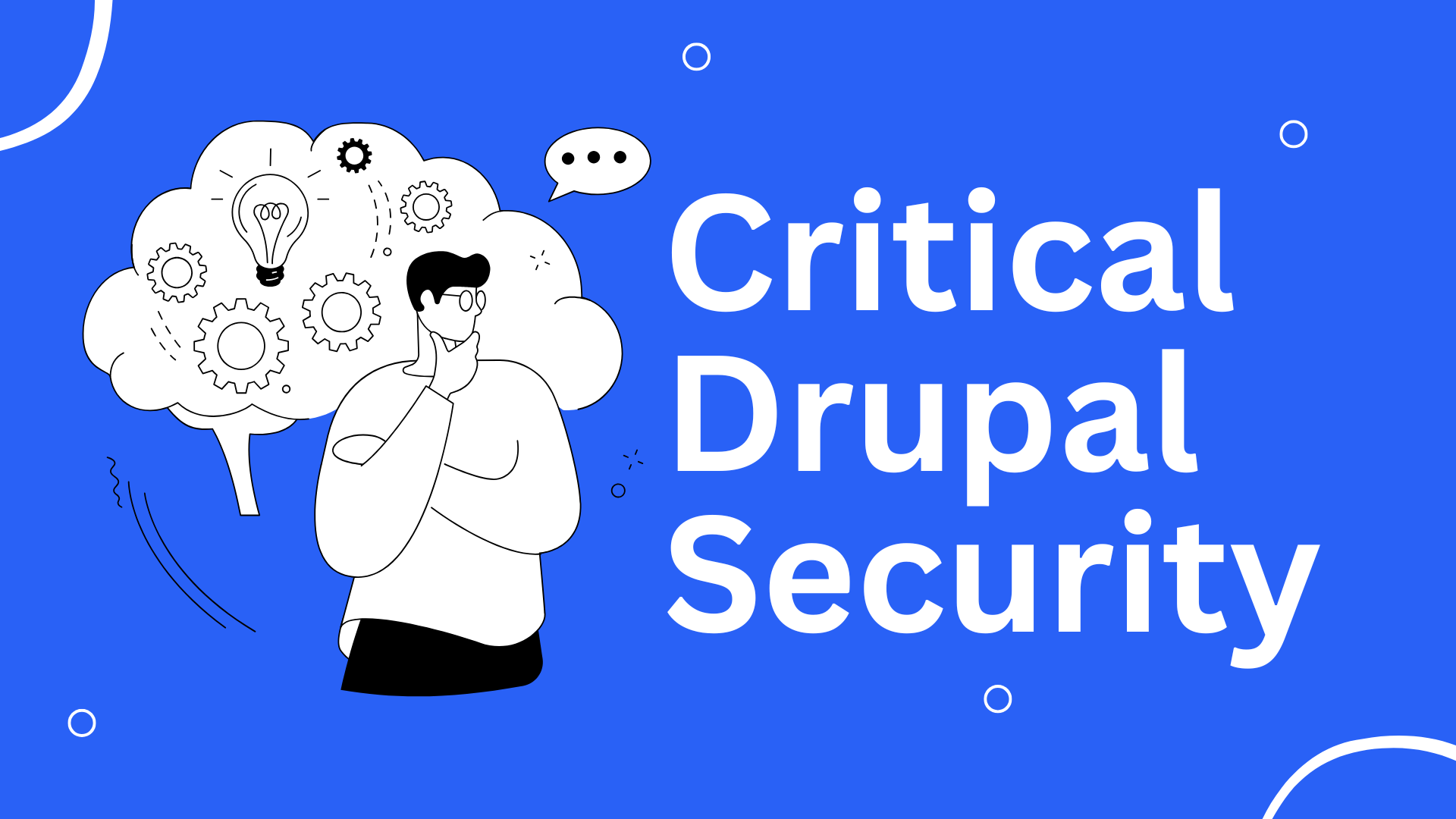As cyber threats evolve, securing Drupal sites demands advanced strategies beyond basic best practices. This post explores cutting-edge techniques for fortifying Drupal platforms, focusing on emerging trends like zero-trust workflows and performance-security integration. Through the lens of Education Above All’s global platform, we demonstrate how these methods ensure robust protection.

The Need for Advanced Drupal Security
Drupal’s security framework, supported by a vigilant community, is robust, but modern threats like advanced persistent threats (APTs) and supply chain attacks require next-level defenses. Protecting sensitive data, ensuring compliance, and maintaining uptime are critical for high-traffic or mission-critical sites. This post outlines advanced strategies to address these challenges, illustrated by a real-world implementation.
Advanced Security Strategies for Drupal
To counter sophisticated threats, Drupal administrators can adopt these advanced techniques:
1. Zero-Trust Authentication Workflows
Implementing zero-trust security ensures no user is trusted by default. Modules like Two-Factor Authentication (TFA) and integration with external identity providers (e.g., Okta via OAuth) enforce continuous verification. Role-based access control with the principle of least privilege (POLP) further minimizes risks by limiting permissions to essential functions only.
2. Hardened Server Configurations
Beyond basic file permissions (644 for files, 755 for directories), securing the server environment is crucial. Use .htaccess to block unauthorized access to sensitive directories and implement HTTP Strict Transport Security (HSTS) headers to prevent downgrade attacks. Regular server hardening, including disabling unused PHP modules and enabling intrusion detection, adds an extra layer of protection.
3. Real-Time Threat Intelligence and Monitoring
Advanced monitoring goes beyond Drupal’s “Recent Log Messages.” The Security Kit (SecKit) module mitigates XSS and clickjacking, while custom scripts can integrate with external threat intelligence feeds to detect anomalies in real time. For example, monitoring IP-based login attempts can block coordinated attacks during traffic spikes.
4. Robust Disaster Recovery Planning
The Backup and Migrate module enables automated, encrypted backups to off-site storage like AWS S3. Regular disaster recovery drills, simulating ransomware or server failures, ensure rapid restoration. Encrypting backups with AES-256 and testing recovery workflows quarterly can reduce downtime to minutes.
5. Performance-Security Synergy
High-performance sites are less vulnerable to denial-of-service attacks. Tools like Varnish or Redis optimize caching, reducing server load. Hosting providers with built-in DDoS protection and updated PHP/MySQL versions enhance both speed and security, ensuring sites remain accessible under attack.
Case Study: Securing Education Above All’s Drupal Platform
The Drupal site for Education Above All (EAA), a Qatar-based non-profit, showcases these advanced strategies in action.
- Challenge: EAA needed a scalable, secure platform to handle millions of visitors, multilingual content, and sensitive donor data, with zero tolerance for breaches or downtime.
- Solution: The following measures were implemented:
- Zero-Trust Authentication: Deployed TFA for admins and OAuth-based SSO for editors, ensuring secure access control.
- Server Hardening: Configured HSTS headers and Let’s Encrypt HTTPS, with strict file permissions for multilingual uploads.
- Monitoring: Used SecKit and custom scripts to detect and block suspicious login attempts during campaign peaks.
- Backups: Set up AES-256 encrypted daily backups to AWS S3, with quarterly recovery tests to ensure resilience.
- Hosting: Selected a provider with DDoS protection and PHP 8.2, optimizing performance and security.
- Outcome: EAA’s site handles millions of users without incidents, supports seamless API integrations, and maintains trust, advancing its global education mission.
Key Takeaways for Advanced Drupal Security
- Adopt Zero-Trust: Use TFA and SSO for continuous authentication.
- Harden Servers: Implement HSTS and strict permissions.
- Monitor Proactively: Combine SecKit with threat intelligence.
- Plan Recovery: Automate encrypted backups and test regularly.
- Optimize Performance: Use caching and secure hosting to enhance resilience.
We work with organizations that value trust, performance, and long-term stability. If you’re ready to strengthen your Drupal site with advanced security and expert guidance, let’s have a conversation.
Blog comments
Drupal security!
This article nails the essentials of Drupal security! From real-world vulnerabilities to actionable best practices, it’s a must-read for anyone managing a Drupal site. I especially appreciated the emphasis on proactive audits and role-based access control—often overlooked but critical. Has anyone implemented these strategies at scale in enterprise environments?
Add new comment